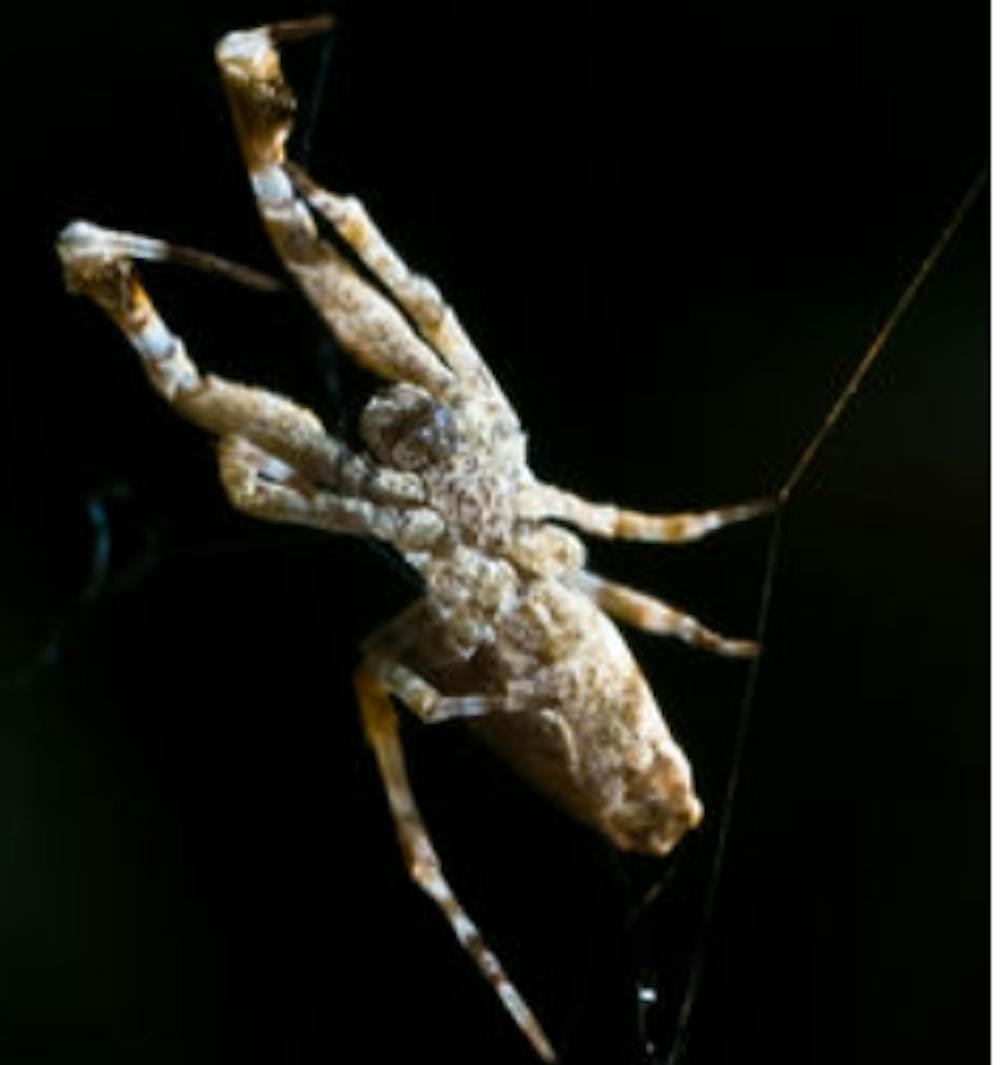Hopkins researchers have uncovered the complex mechanisms by which spiders build their webs, revealing a host of intricate steps and dynamic complexes that belie the supposed lack of cognition present in “lower level” organisms.
Spiders have long been seen as creatures of the night, monsters to be feared. However, there is more to them than meets the eye. Research has shown that many species of spiders have brains that fill up over 80% of their body cavities, extending even into their legs. In this case, size doesn’t matter — whether big or small, spiders are shown to have around the same cognitive capacity. Their brains are still relatively tiny compared to other larger organisms, but that doesn’t stop spiders from building and maintaining elaborate webs in just hours.
It was this dissonance that Andrew Gordus, assistant professor in the Department of Biology, hoped to address with his research. In a project recently published in Current Biology, Gordus and his team focused on the hackled orb weaver, a family of spiders chosen for their small size and year-round activity.
In an interview with The News-Letter, Gordus explained how new technologies and algorithms such as convolutional neural networks and dimensionality-reduction techniques have allowed organisms with novel traits to be explored. He noted, however, that studying model organisms poses its own issues – namely, the difficulties of raising and caring for spiders, which he said are typically less-than-thrilled to spend time with humans.
To observe the spiders, Gordus and his team used a complex system of infrared illumination and high-speed cameras to monitor the spiders’ behaviors, which were then applied to a computer algorithm that tracked the arachnids’ leg movements. Gordus and his team then manually annotated the different stages of web building, unfurling the complex tapestry of web-making into its various parts. Abel Corver, the lead author of the study and a fifth-year graduate student, spoke of the computational advancements that made this experiment possible in an interview with The News-Letter.
“Recent years have seen huge developments in machine vision that have made it much easier to track limb trajectories of spiders across millions of frames,” he said. “There are dimensionality-reduction tools that have become very popular — t-SNE is the one we ended up using — that allow you to visualize that high-dimensional movement space in a lower-dimensional, interpretable space.”
The results showed that each stage of web-building was characterized by its own set of unique movements and behaviors, such that a Markov model, a stochastic mathematical model, was able to identify the web stage based upon just the spider’s behavior. Gordus compared this to a ballet — if one intimately understands the dance, one can identify the movement and act within seconds, based solely upon the patterns of the dancers.
To Gordus, some results still came as a surprise.
“All these different species [of spiders across the world], which have diverged millions of years ago, go through the same stages of web-making. So it seems like a reflexive behavior. But in our experiments [with just one species], it turns out to be very plastic,” he said. “[The spider] can start in one stage, and then go back to a previous stage. It shows that the ability to transition between stages isn’t this hardwired thing.”
Looking to the future, the Gordus Lab hopes to eventually uncover the chemical pathways which drive web-making, and how they help to order and structure the spider’s behavior. Put simply, the team will observe how drugs affect web-making processes.
“It’s been found that LSD, caffeine, et cetera have specific effects on specific types of behavioral geometry, meaning that if you are able to map out the neural circuits that are affected by those drugs, you can start to get a sense for what circuits of the brain are responsible for which behaviors during web-making,” Corver said.
In addition, Gordus is working with an undergraduate to understand how spiders repair their webs in response to varying levels of damage. A spider will repair a relatively small hole, but would rather build a completely new web than try to fix a large chasm — a marked ability to perform a sort of cost-benefit analysis which requires further study.
“Ultimately, I would like to know how [spiders] organize all of their motor functions; I probably won’t live long enough to do that, but maybe by the time I’m on my deathbed, we’ll have the tools to really get a good handle on this,” Gordus said.
But the question often arises: what do these studies actually mean for us, for humans? To answer this question requires turning to the School of Medicine’s Solomon H. Snyder Department of Neuroscience, where Gordus also works.
“Evolution is a conservative engineer, and I think it’s really informative to understand how other organisms [with lower amounts of neurons] decode behavior, because it can show the underlying principles for how our own brain functions,” Gordus said.
Gordus explains that despite having such large brains, arthropods do not actually contain a hippocampus, the part of the brain thought to be responsible for memory. However, they do contain a kind of hippocampal structure similar to the central complex, an insect brain region seen in fruit flies that is thought to have important roles in sensory integration.
“Spiders have a homologous structure called an arcuate body, which is thought to be important for web-building, because when you lesion the body, the spiders can still build webs, but they’re kind of fucked up,” he said.
While also acknowledging the potential the research has on understanding human cognition, Gordus ended with a statement that emphasized the importance of such research even in the absence of clear human application.
“On an ecological scale, invertebrates are 95% of the animal population. We are so egotistical — the mass of all ants is more than every single vertebrate combined. They’re dominant, and understanding how this dominant class of organisms work is valuable,” he said.





